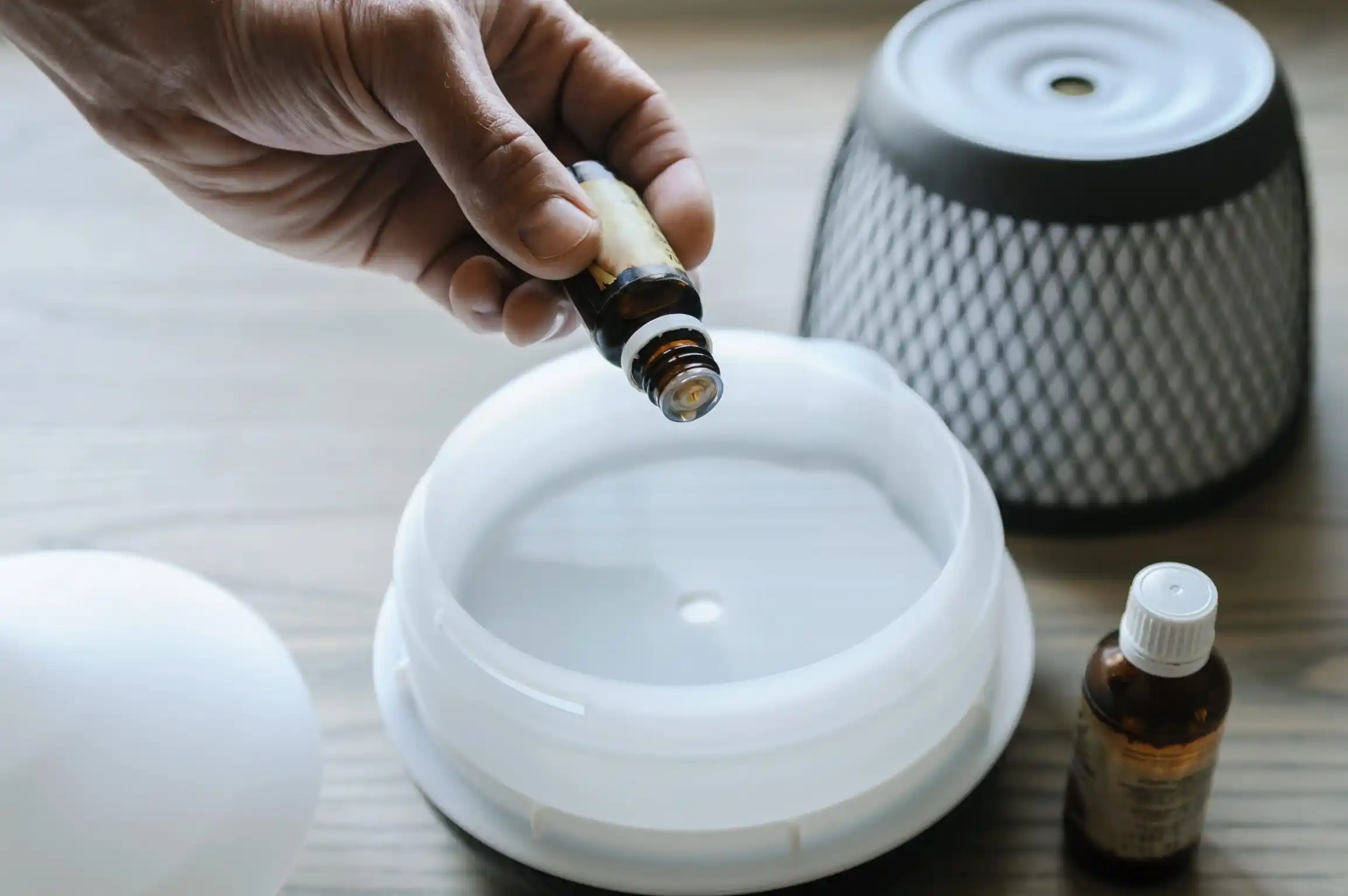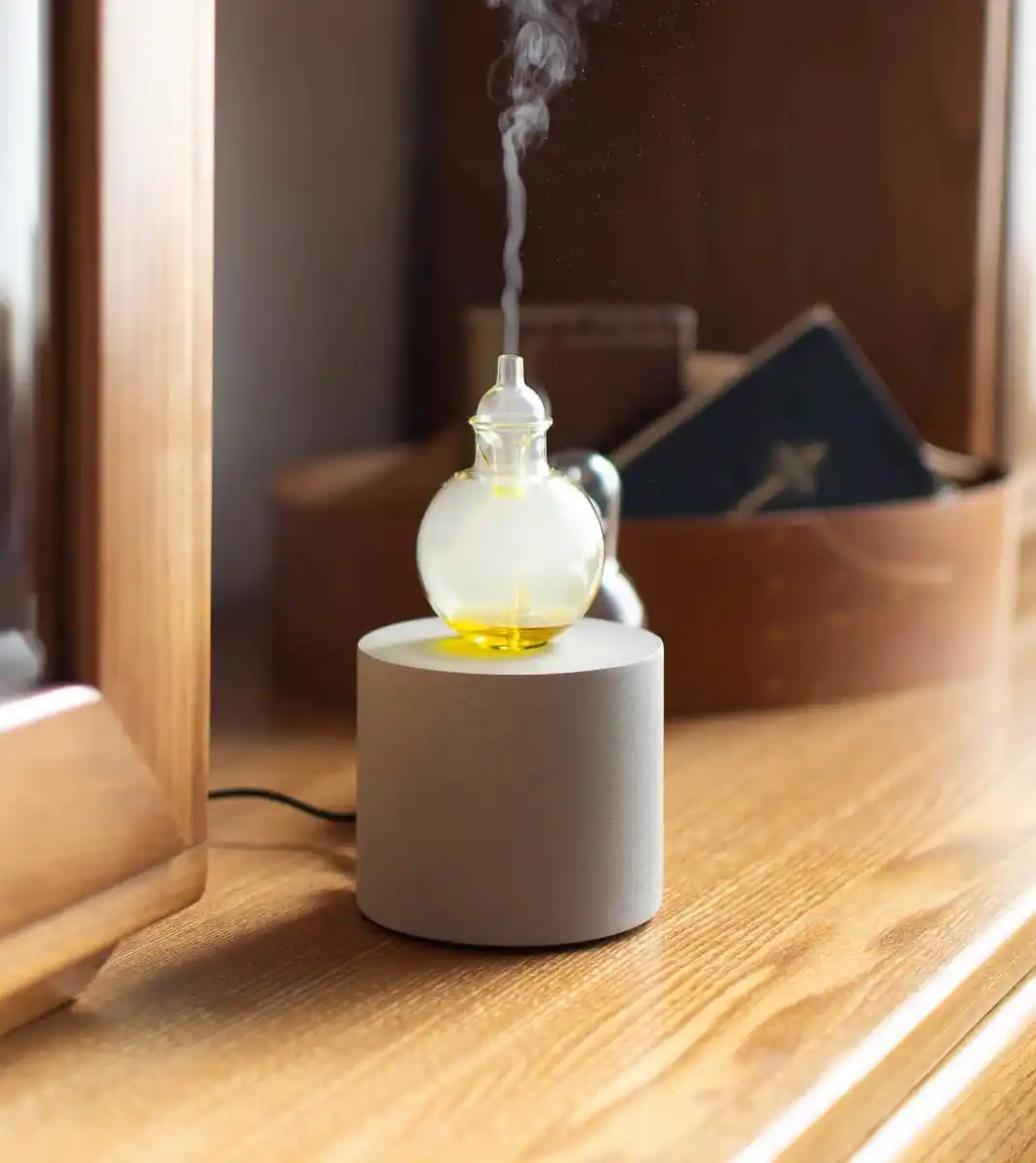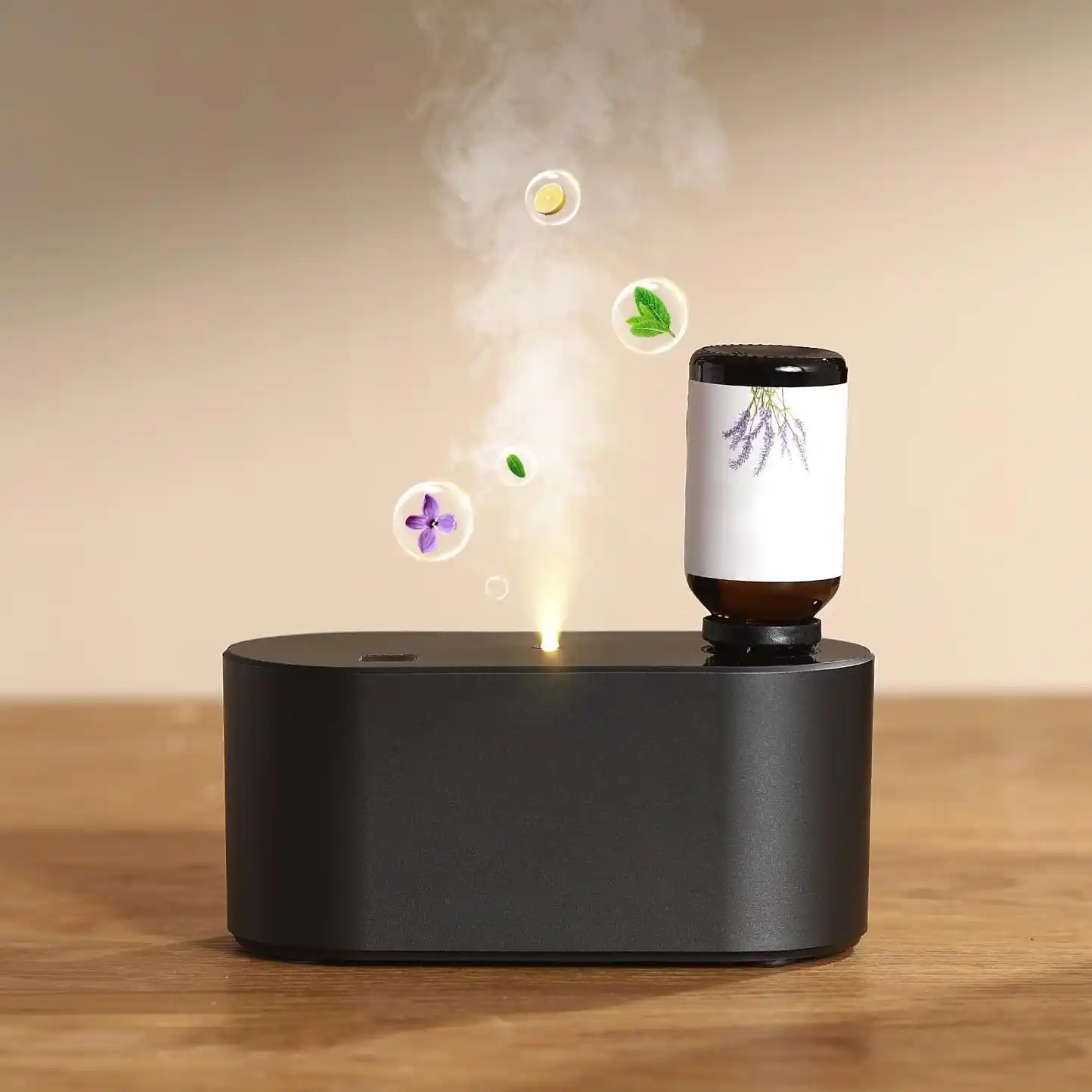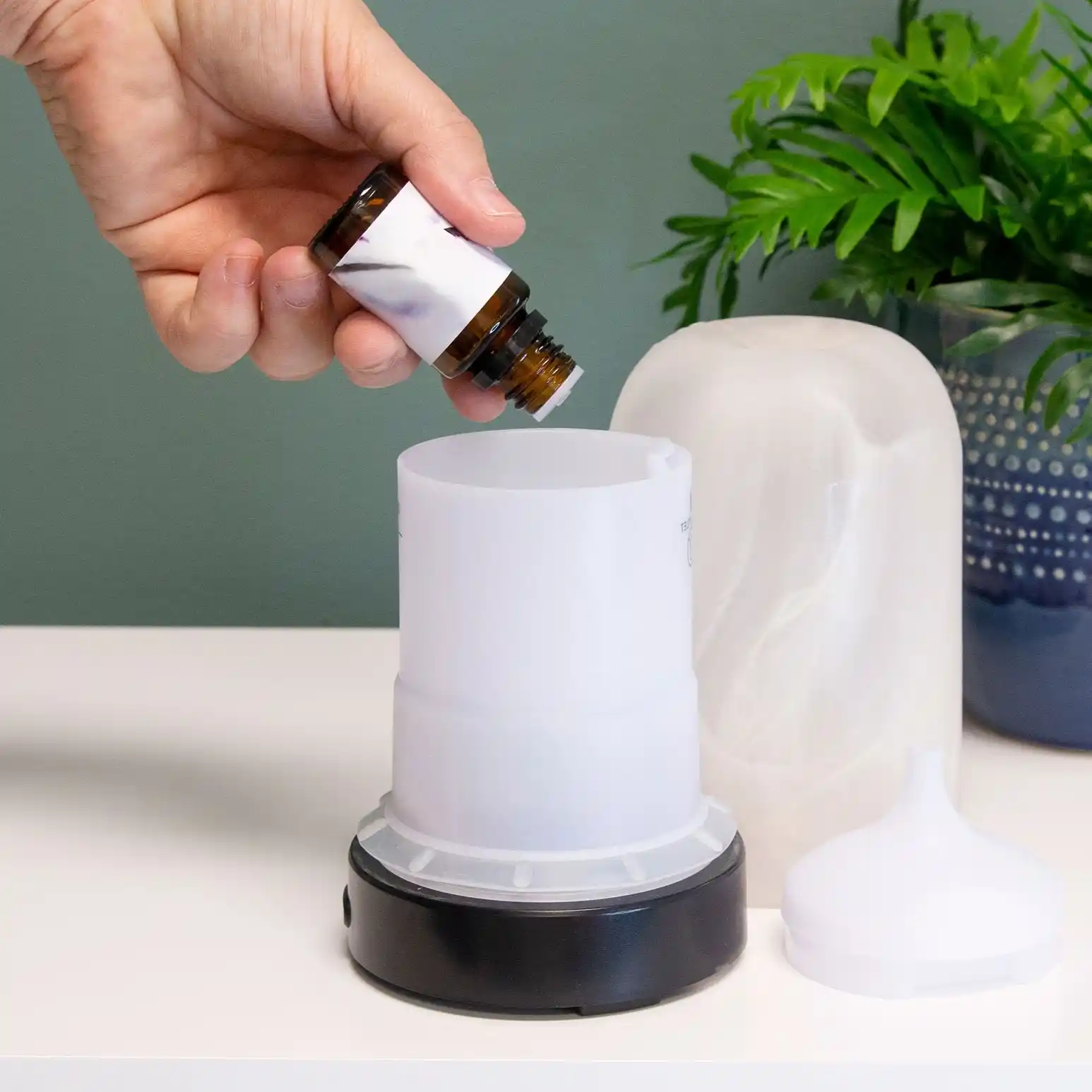



You spray a hotel lobby at 45% RH and the scent hangs nicely. Bump that space to 65% RH and—surprise—the vibe changes. Same diffuser, same oil, different air. That’s the Wells evaporation–falling curve sneaking into your business, shaping how your mist behaves before customers even smell it. In short: droplets either shrink into light “nuclei” that float or stay big and fall out. Get that balance right and your scent plan sings. Get it wrong and money falls—literally—to the floor.
Below, I’ll keep it plain, tie the physics to real fragrance work, and show where I’Sc ent (I’Scent) plugs in with fast custom oils and device-tuning. No fluff—just what helps you ship better air care, hospitality, candle, and diffuser results.
What it is: A classic map that predicts two fates after a droplet leaves a nozzle:
What it means for scent:
Rule of thumb that still holds: treat ~1–5 µm MMAD as your deep-air zone for long float and wide coverage; >5 µm gets grabby and starts dropping sooner. We’ll nuance that with humidity and device type in a second.
Humidity pushes your droplets one way or the other:
Quick win: Match RH + device output rate + fragrance volatility. In damp rooms, nudge toward finer PSD and slower duty cycles; in dry rooms, watch “over-aerosolization” and use timed bursts.

Why PSD rules the room: Particle size drives how far scent drifts, how much deposits, and where customers actually perceive it (nose-level vs floor-level).
Operational note: PSD isn’t static. As the mist travels, droplets evaporate or swell, so the in-room “effective PSD” moves. That’s why you sometimes see great cold-throw at the device but weak nose-level 5 m away.
Three physical routes eat your fragrance before customers do:
Think in zones: you want enough fine fraction to paint the air, while keeping a controlled slice of 3–5 µm for perceived body at human height.
“Fall-out” isn’t only waste; it also shapes the base-note perception. On stone floors and cold surfaces, heavier droplets die fast—low sillage and poor tenacity in the air. In warm, moving air (near HVAC supply), the same formula feels more diffusive and lively.
Industry shorthand you can use with ops:
| Aerodynamic size band (MMAD) | Typical fate in room air | What the nose feels | Common loss routes | Tweak if it’s not landing right |
|---|---|---|---|---|
| >10 µm | Fast fall-out, visible mist near device | Heavy close-up, dies fast farther out | Impaction on grills/walls; puddling | Cut output burst, swap to finer mesh/nozzle, raise mounting height, reduce RH if possible |
| 5–10 µm | Mixed: some drift, noticeable drop | Round body near-field | Impaction + sedimentation | Trim total loading, add turbulence via HVAC tie-in, shorten duty cycle |
| 1–5 µm | Best hang-time vs noticeability | Even, present, travels with air | Slow sedimentation | If over-diffuse, add brief higher-output pulses to build body; adjust formula volatility curve |
| <1 µm | Long float, may over-dilute | Clean haze; can feel weak | Diffusion + exhaust loss | Increase mid-band fraction (2–3 µm), reduce super-volatiles, choose heavier base notes |
Note: RH tilts every row. Higher RH = more fall-out; lower RH = more nuclei & spread.

When you need a tuned system, check our Air Care solutions—OEM/ODM oils that match your diffuser strategy and room physics.
→ Air Care
Lobby scent isn’t just notes; it’s how the plume moves from door to desk to lounge. We design oils to the diffusion curve of your hardware and to the space climate.
Plan a lobby upgrade here:
→ Hotel Fragrance Manufacturer | Premium Scents Customization Service
Diffusers behave different. Ultrasonic vs mesh vs venturi need different carrier bases and volatility ladders to hit that 1–5 µm sweet spot after travel. We build for low residue, clean lines, and stable sillage even under dry HVAC.
Browse ready-to-ship and custom runs:
→ ISCENT – Professional Diffuser Fragrance Oil Manufacturer | Wholesale Diffuser Fragrance Oils
Candles live in the hot throw world, but the same mist physics explains why a burner near a cold window underperforms. We tune the top/middle/base so diffusion into room air doesn’t stall or pool.
See options:
→ Leading Candle Fragrance Manufacturer | 40,000+ Formula Available, OEM Accepted
Need oils that behave in the air, not just smell pretty? That’s our daily job since 2005. Global docs ready, low MOQs for trials, batch consistency locked with ERP. We dont over-promise; we build, test, and ship fast.
Explore I’Scent:
→ OEM/ODM Fragrance Oil & Perfume Raw Materials Manufacturer

If you want us to re-formulate for any of these, we’ll spin samples in 1–3 days and keep batch behaviour consistent.
| Variable | Lower bound scenario | Upper bound scenario | What to watch |
|---|---|---|---|
| RH | 30–40% quickly shrinks droplets → more nuclei, long hang | >65% slows shrinkage, more fall-out | Dry = spillover risk; Damp = floor loss |
| MMAD | 1–3 µm = reach and evenness | >8–10 µm = near-field, fall-out | Balance body vs spread |
| Airflow | Near supply = ride the jet | Near return = scent gets removed | Mounting and duct tie-in |
| Formula volatility | Fast top-notes bloom early | Heavy base add body but can pool | Build a staged evaporation curve |
| Device output | Short pulses stabilize perception | Long blast causes pooling | Duty cycle, not just % power |
Need a lobby standard, a spa line, or a whole Air Care program? Let’s make the mist behave, not misbehave.
→ Air Care · Hotel Fragrance Manufacturer | Premium Scents Customization Service · Diffuser Fragrance Oil Manufacturer · Candle Fragrance Manufacturer · I’Scent Home